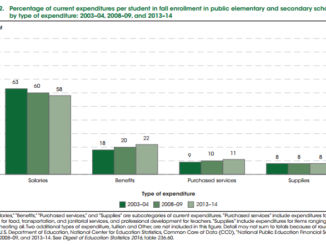
The nomination of Miguel Cardona as U.S. secretary of education sends a clear message to young people of color, particularly those living in low-income communities across the nation: You do not need to leave your hometown to succeed.
Cardona grew up in the Yale Acres public-housing complex in Meriden, Conn. He attended Meriden’s public schools, where his children now go to school, and was a teacher and an administrator there. He holds multiple degrees from Connecticut state universities, and the mayor of Meriden credits him with helping transform the Meriden public schools into a district with 21st-century connectivity. When Cardona was nominated to lead Connecticut’s K-12 education system, he said proudly, “I’m a true product of the system I hope to lead.”
For the two of us, Cardona’s story is inspirational and personal. Although we grew up in different communities on opposite coasts, we both committed our careers in education to serving our hometowns and to staying close to the places that fundamentally shaped us and the identities we are so proud of. Nancy was a teacher and principal at schools just blocks from where she was raised in a predominantly Mexican American neighborhood in East San Jose, Calif. Roberto is the school district superintendent in his home community of Newburgh, N.Y. He was just named the 2021 New York state superintendent of the year. When opportunities have taken us elsewhere, home is still with us as we represent and raise the voice of our towns, create local scholarship programs, and advocate for our communities and others like them on a national level.
We made these choices in spite of the well-intended advice we got from educators along the way who told us we showed enough potential to “escape the ‘hood.” If you want any chance of living a promising life, they said, You must leave to succeed.
This kind of message is too often communicated to families and young people of color living in low-income communities. It comes in many forms:
- Move to that neighborhood with the good school or save up money to send your children to school there.
- Expose your children to different types of people and communities.
- Your kid has potential and deserves something better than this.
This is all coded language for, “If your kids are going to be successful, they need to get to wealthier, whiter neighborhoods.”
.This message is baked into education policies and institutions. From a young age, children of color are taught to aspire to attend the well-resourced public schools that shimmer across the river or on the other side of the railroad tracks. Private schools tempt the “best and the brightest” from their neighborhood schools with scholarship offers and promises of a better education. Elementary-aged children compete for spots in selective gifted education programs housed in other neighborhoods, and middle schoolers are told to keep up their grades so they can get into the right high school across town. When these same children sit in front of their television sets, they are bombarded with stories of violence, crime, and the sadness of the places they call home, perpetuating the narrative that you have to get out to get up.
We call this deficit-based approach the “leave to succeed” mindset. It maintains the dangerous notion that proximity to “whiteness,” whether it is gained through specialized classes, school admissions processes, or segregated neighborhoods, is key to attaining success. It distracts from the need to invest in low-income communities while elevating their assets. And it is slowly killing the hopes and aspirations of our young people of color and their beautiful communities.
Here’s why. When educators encourage students in low-income communities of color to leave their home schools or neighborhoods to experience success, they are devaluing the worth of the entire community. A young person who hears this over time might internalize the idea, lose pride in himself and his neighborhood, and begin hoping, praying for a way out. As he or she shares the belief with friends, neighbors, and family members, these negative perceptions spread, gaining credibility among insiders and outsiders and creating a community that is undervalued and teeming with self-hate.
We proudly rejected this notion in our journeys. We love the communities that raised us and made us who we are. We have seen how our leadership there has helped our neighbors take renewed pride in who they are and all they are capable of as individuals and collectively. As leaders in our hometowns, we walked in with high expectations for every child in every classroom, as we saw ourselves in their eyes. We understood aspects of their culture and experiences, and we took the time to see and respect each child for who they are.
As important, we worked with our staff to celebrate and bolster every young person. And we offered living examples of the kind of leaders community members could become. Over time, we saw renewed faith in our school districts resulting in academic achievement and rising graduation rates.
We are forever grateful for the inspirational opportunity to serve our hometowns. It is always a thrill to hear from former students who have become teachers there or who are following their dreams elsewhere, inspired, they tell us, by the examples we set and by the community that shaped them. Sadly, stories like ours, like Cardona’s, are rarely told or celebrated. We only hear the “success” stories of young people who became successful after they “got out.”
We hope that under Cardona’s leadership, we can make it a badge of honor to serve your community. We hope that we can all begin to imagine an education system where, in addition to academic success, we value remembering and taking pride in one’s roots and proudly representing your community in all walks of life—whether you choose to leave your community and broaden your definition of home or you reinvest by returning to your community to serve.
Thank you, Dr. Cardona, for showing our young people the power of their communities by demonstrating that you do not need to leave them to succeed.



